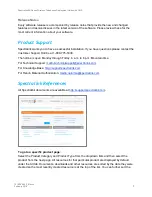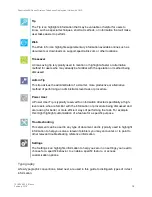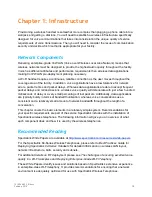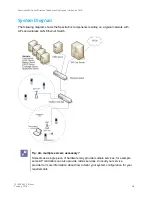
Spectralink 84-Series Wireless Telephones Deployment Guide with CMS
721-0048-000_B.docx
February 2018
19
DHCP Server
Dynamic Host Configuration Protocol (DHCP) is a standardized protocol that enables clients to
be dynamically assigned with various configuration parameters, such as an IP address, subnet
mask, default gateway, and other critical network configuration information. DHCP servers
centrally manage such configuration data, and are configured by network administrators with
settings that are appropriate for a given network environment. The handset will use the DHCP
options shown in the following table if DHCP use is enabled. The DHCP setting will usually take
precedence if it is set and if it is available but can be overridden by certain parameters.
Option
SIP Parameter
Meaning
1
NA
Subnet mask
3
NA
Default gateway
6
DNSSRVR
DNS server
7
LOGSRVR
Syslog server logging
15
DOMAIN
Domain name
42
SNTPSRVR
NTP Server
43
sec.TLS.customCaCert.x Auto discovery of the root CA
certificate. If this setting is
unavailable, set the parameter per
this guide.
66
TFTPSRVR
TFTP server
Consult with your service provider if you choose to use static configuration.
SIP Call Server
The call server provides SIP telephony support.
Access points
Enterprise-grade Wi-Fi access points provide the connection between the wired LAN and the
wireless LAN. VIEW Certified APs must be positioned in all areas where Spectralink handsets
will be used to ensure seamless radio coverage. The number, type and placement of access
points will affect the coverage area and capacity of the wireless system. Careful planning of the
WLAN is necessary to ensure excellent voice quality.
An’ optimized for voice’ WLAN will yield
great benefits to the wireless telephone user community.
APs must be properly configured to support the corresponding QoS and security methods
selected for the 84-Series handset.
















































